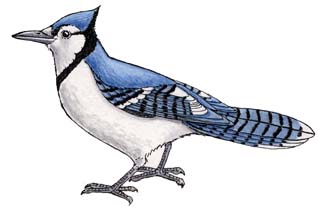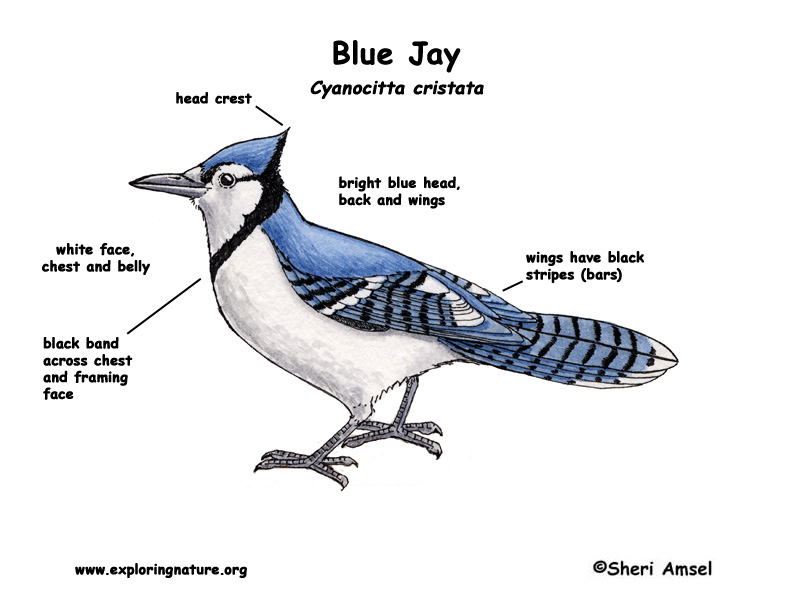

They are found in southern Canada through eastern U. S. to Gulf Coast, westward to central Texas. There are small groups of them all the way west to Washington. Some go south (migrate) in winter and some stay in the north.
They live in oak forests and suburbs.
They are bright blue on their heads, back and wings with black stripes (bars) on their wings and tail. They have a white face, chest and belly. They have a blue head crest with a black line framing the sides of their face.
They have a loud call and can be very aggressive.
They eat nuts and seeds with some fruit and insects.
They build a nest of twigs and grass, with mud. The female lays 2-7 blue to light brown eggs with brownish spots.
Kingdom: Animalia
Phylum: Chordata
Subphylum: Vetebrata
Class: Aves
Order: Passeriformes
Family: Corvidae
Genus: Cyanocitta
Species: C.cristata
When you research information you must cite the reference. Citing for websites is different from citing from books, magazines and periodicals. The style of citing shown here is from the MLA Style Citations (Modern Language Association).
When citing a WEBSITE the general format is as follows.
Author Last Name, First Name(s). "Title: Subtitle of Part of Web Page, if appropriate." Title: Subtitle: Section of Page if appropriate. Sponsoring/Publishing Agency, If Given. Additional significant descriptive information. Date of Electronic Publication or other Date, such as Last Updated. Day Month Year of access < URL >.
Amsel, Sheri. "Jay (Blue)" Exploring Nature Educational Resource ©2005-2024. December 13, 2024
< http://exploringnature.org/db/view/206 >

